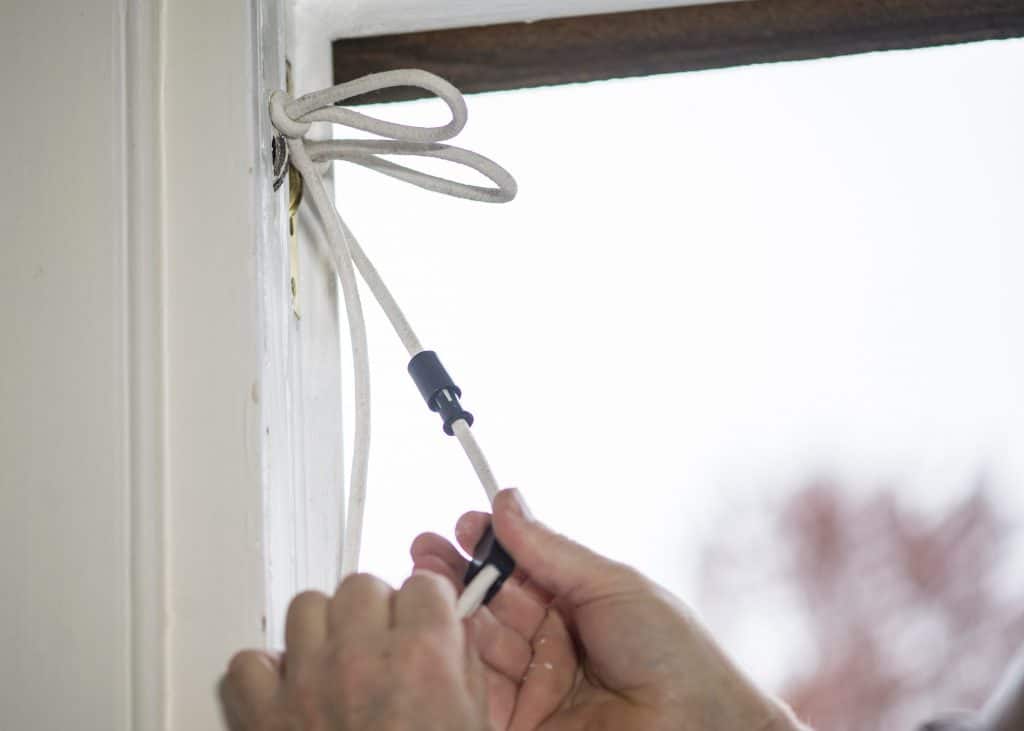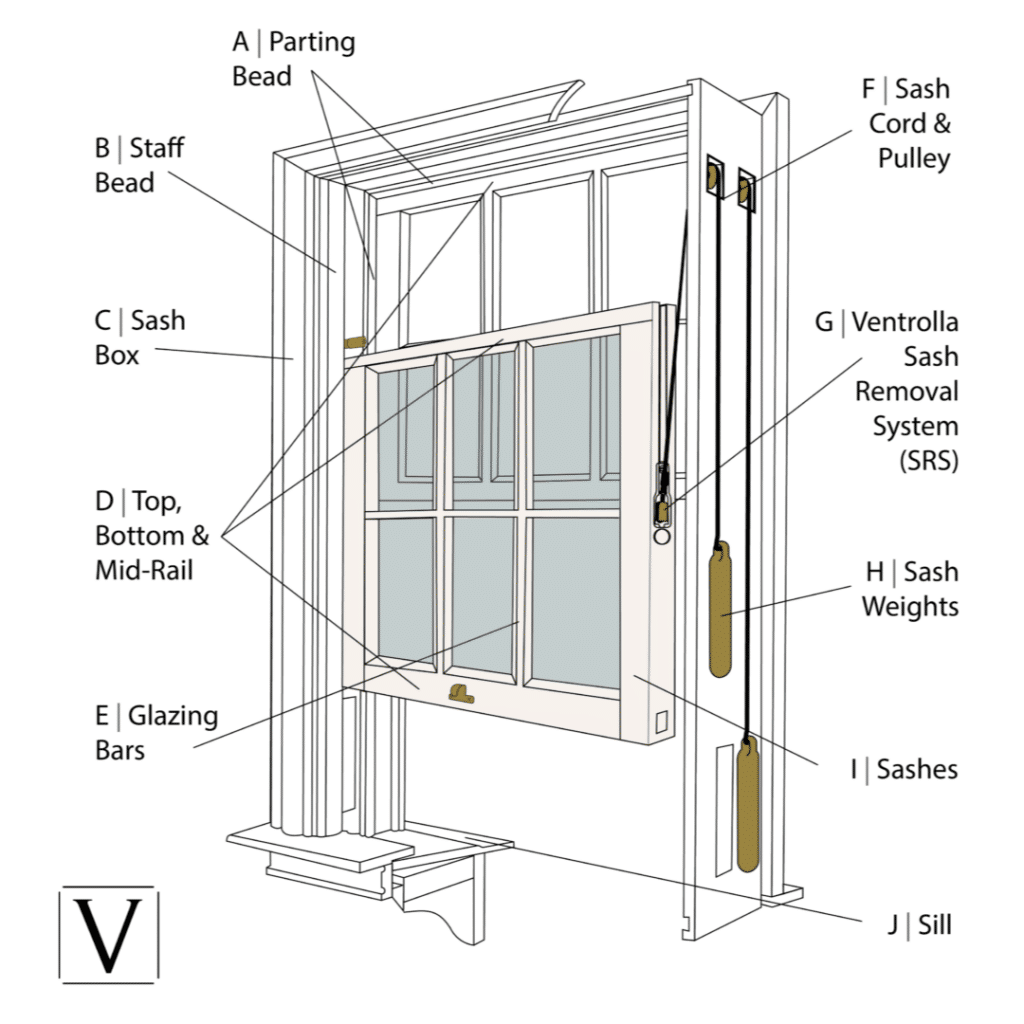How does a sash window work?
While your sash window is sliding smoothly, you may not give its inner workings a second thought. However if you find your window is sticking, not staying open or is suddenly too heavy to push, it can be handy to understand how it operates behind the scenes.
Understanding the sliding mechanism
It’s thanks to the clever cord, weight and pulley mechanism that a sash window can be pushed open relatively easily. But it’s not always been this way. Early vertical sashes would have been supported by blocks of wood and holes with pegs, before the counterbalanced mechanism was designed in the late seventeenth century.
But how does it work? Sash weights inside the window frame counterbalance one another. They’re connected through a sash cord – hidden inside the casement of the window – which is looped over a service pulley system. This minimises the weight of the window, making it easier to push open.

The importance of quality components
Quality parts make a difference to how effortlessly your sash opens and closes. Hand-made by experts to millimetre precision, Ventrolla’s sash cords correct the balance of the sash windows to ensure a perfect slide. All of the elements within the sliding mechanism – the cord, the pulley and the counterweight – work together for a smooth action.
The parts of a sash window
Generally, sash windows are designed to conceal the functional mechanisms – but knowing how your window is made up can help you understand how it works. Sash windows are made up of lots of different parts. Some move and some are fixed – but all play a role in the form and function which has made these windows so iconic.

A | Parting Bead
These long, narrow strips sit between the upper and lower sashes, enabling them to slide past one another.
B | Staff Bead
This trim frames your sash box on the interior side. It keeps the sashes in place.
C | Sash Box
This is the window frame that surrounds the window and includes the window sill externally.
D | Top, Bottom & Mid-Rail
These are the horizontal sections of timber that make up each sash frame. Each sash has a top and a bottom rail, and where they meet in the middle of the window is known as the mid-rail.
E | Glazing Bars
Mainly a feature in Georgian homes, glazing bars are the small, detailed pieces of timber that span the glazed sash, both horizontally and vertically.
F | Sash Cord & Pulley
Sash cords, commonly made from braided cotton or jute with a waxed finish, are fed up and over the pulley.
G | Ventrolla Sash Removal System (SRS)
To help with future maintenance, cleaning and painting, Ventrolla’s unique Sash Removal System sits discreetly in the side of each sash. It stops the sash cord from breaking free from your sashes –which would cause the sash weights to drop into the sash box – and enables you to remove the sash simply.
H | Sash Weights
Often made of cast iron or lead and hidden within the box at the side of the pulley system, sash weights are attached to the sash cord, to counterbalance each sash as it moves.
I | Sashes
In a traditional sash window, there will be one or more moveable sashes (single or double hung), that sit inside the window ‘case’, sliding up and down to open and close the window.
J | Sill
This sits at the bottom of the sash box externally. The sill gets the brunt of the weather so it’s a key area for rot to set in, which in turn, can travel up the timber in your window and into the sashes.
Got sash window problems? It could be time to call in the experts
The design of timber sash windows means that individual parts – like sash cords – can be replaced or repaired when necessary. The SRS means that access is easier than it would have been traditionally, but it can also be sensible to call on expert help. From splicing in new wood to a rotten sill to replacing sash cords and weights, contact the team at Ventrolla for your free, no-obligation consultation.
